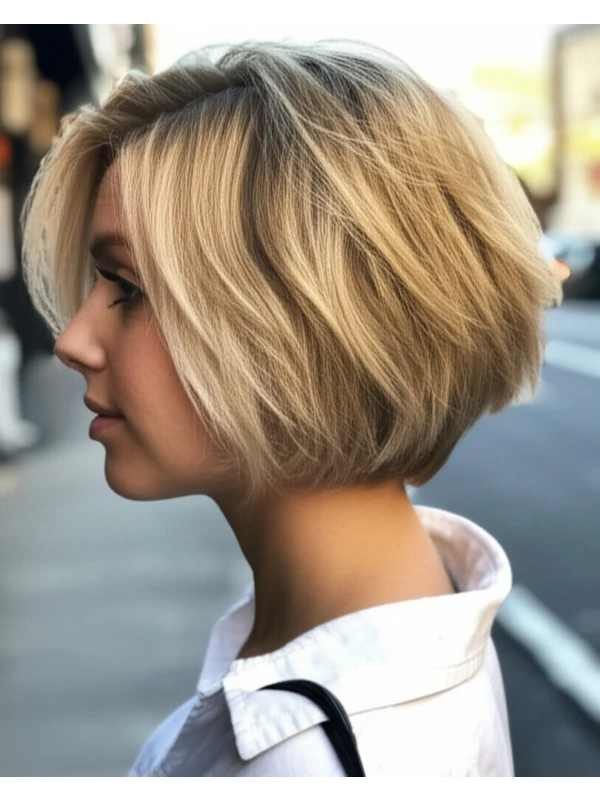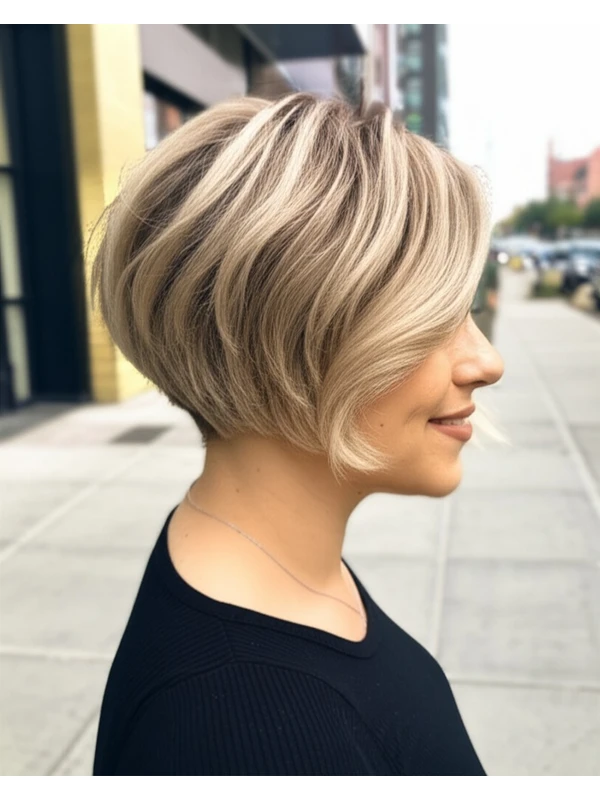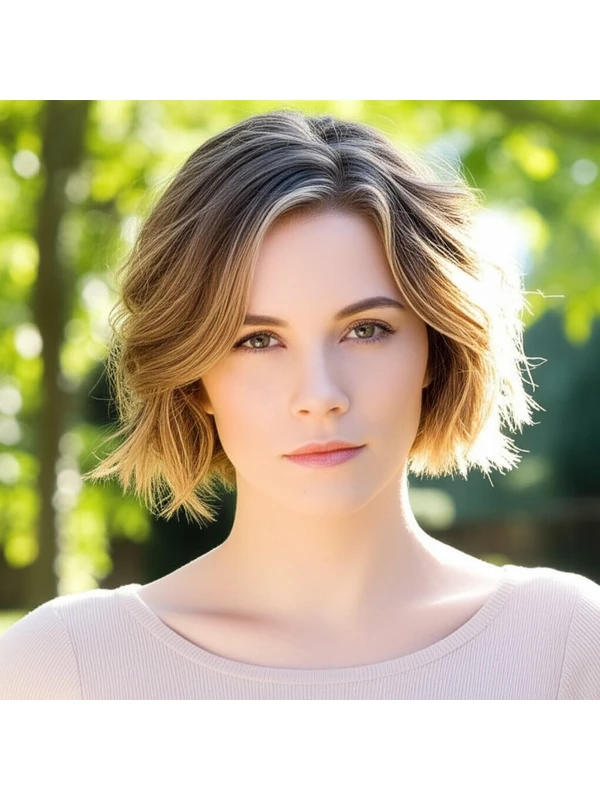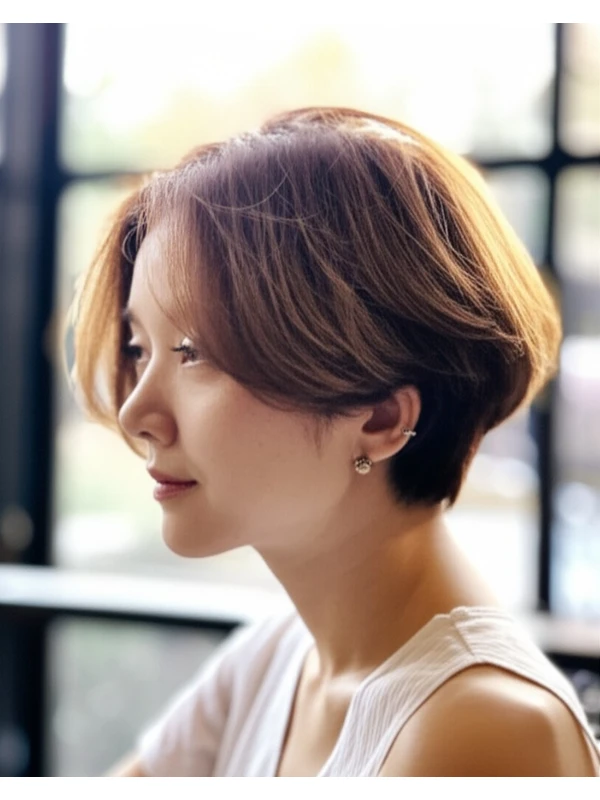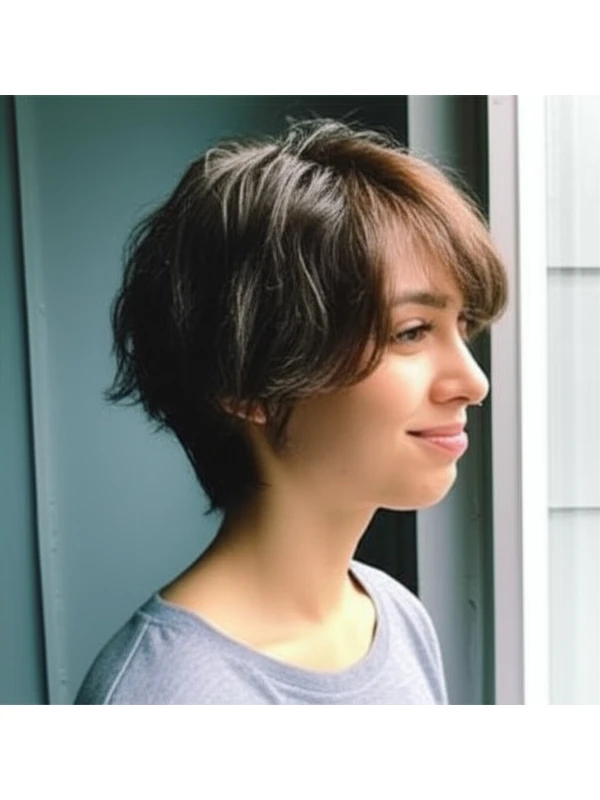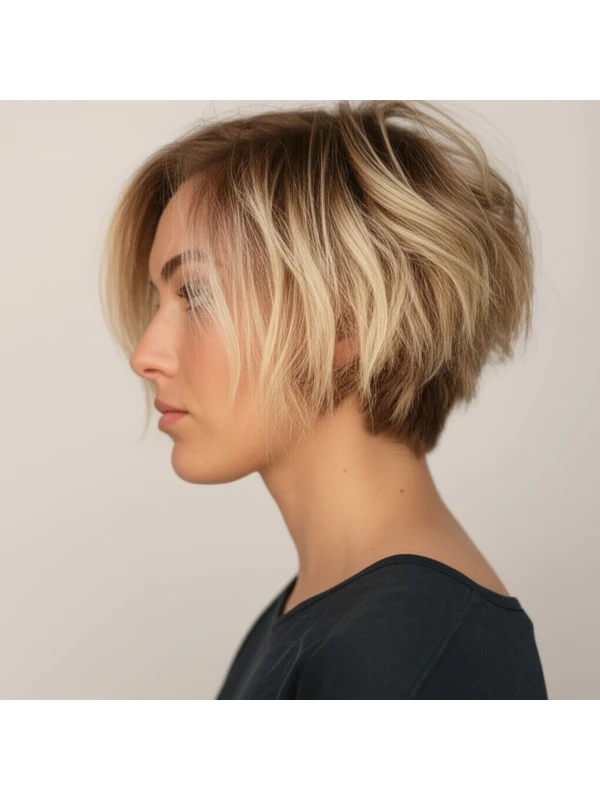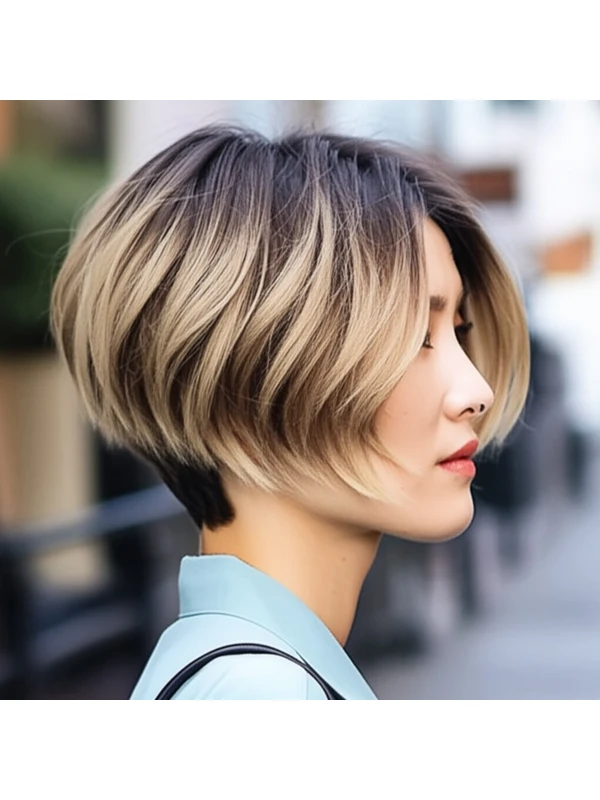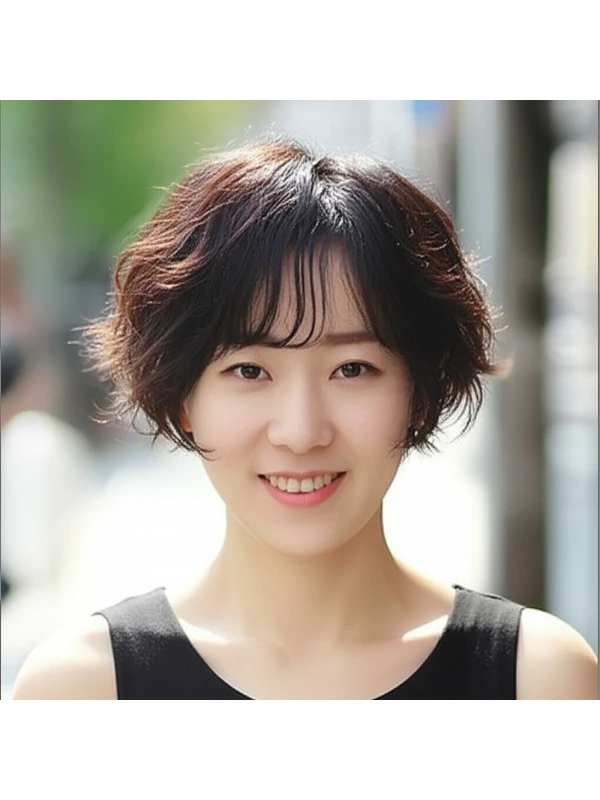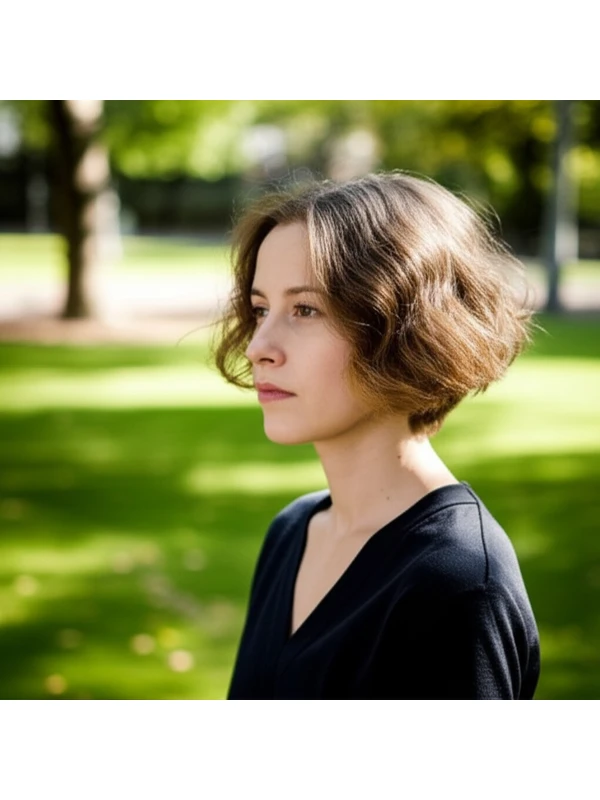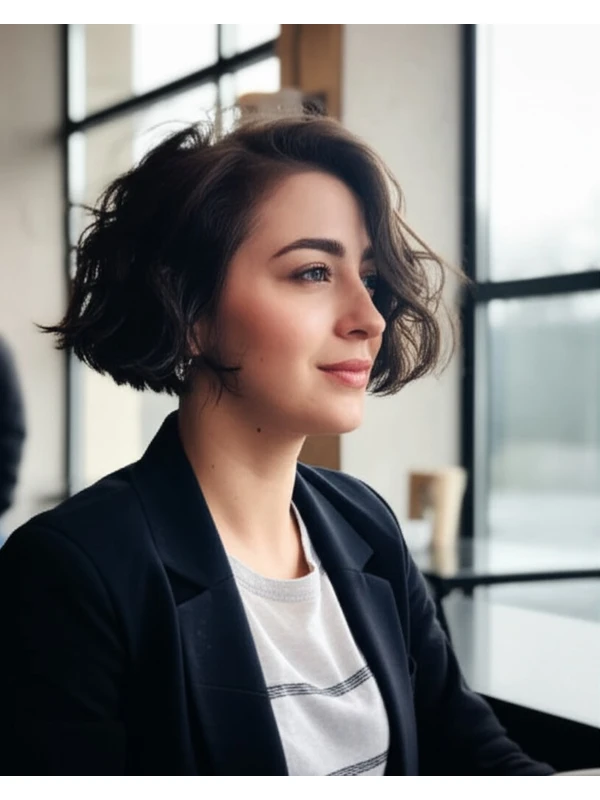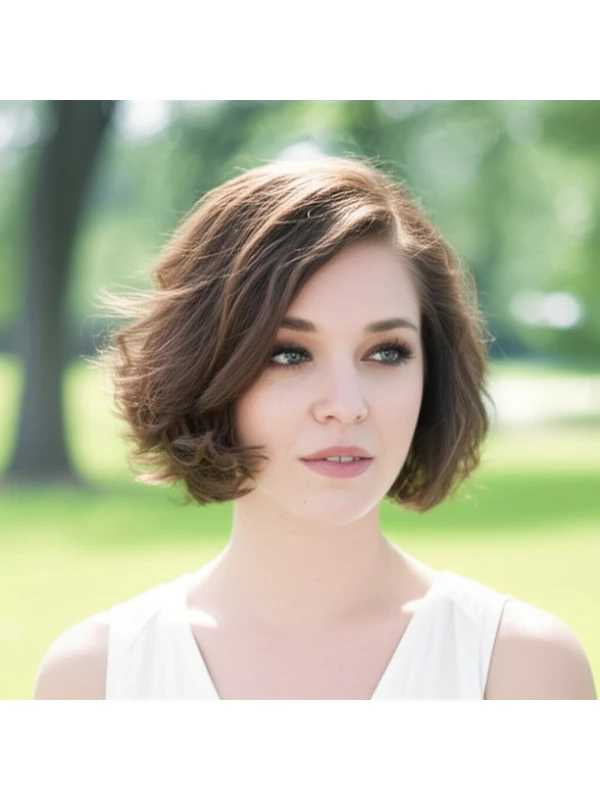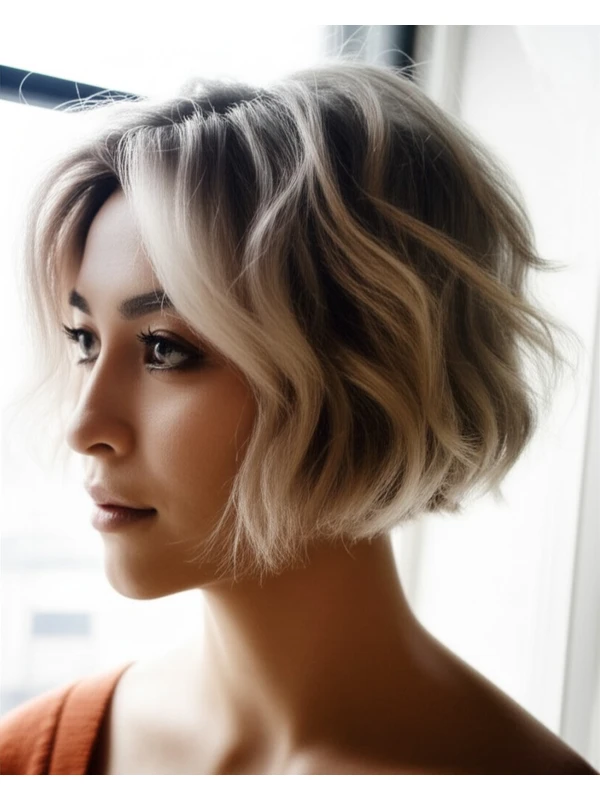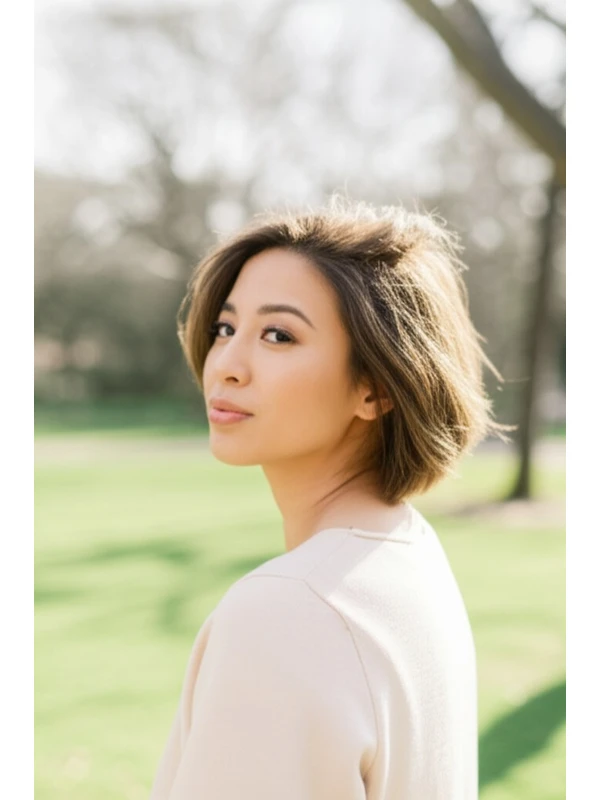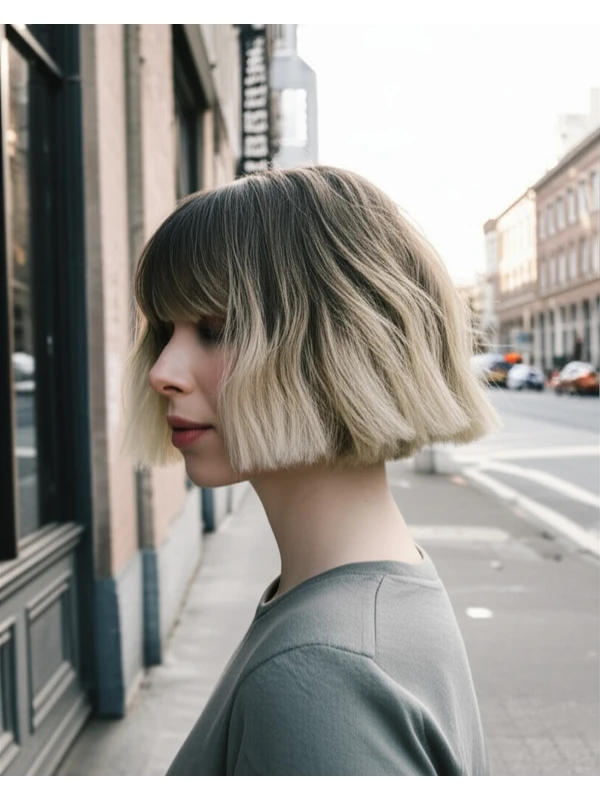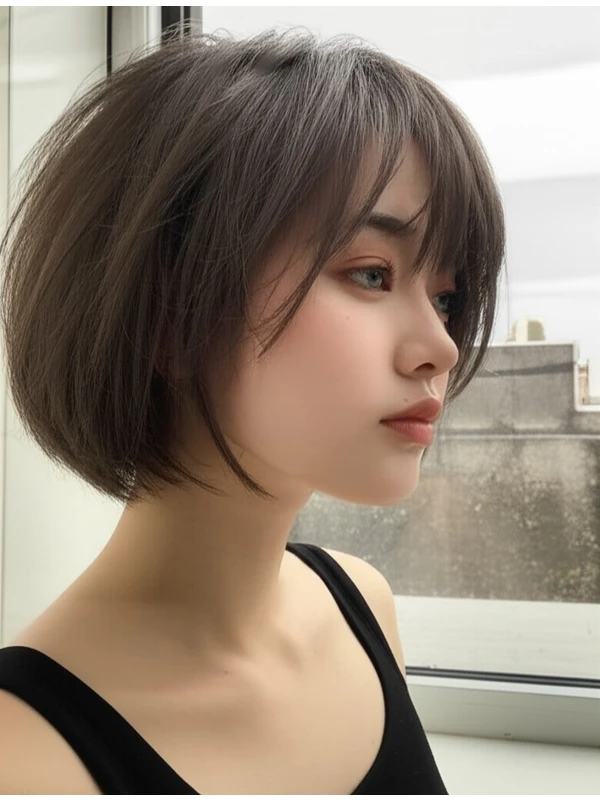#The Inverted Bob: A Modern Classic
The inverted bob is a timeless hairstyle that’s experiencing a major resurgence! It's more than just a haircut; it’s an attitude, offering both sophistication and effortless cool. This guide will break down everything you need to know about the inverted bob – from its history to how to style it perfectly for your unique features.
#1) Background & Definition: What is an Inverted Bob?
The inverted bob (also called a reverse bob or stacked bob) isn't just about length; it’s about shape. Imagine a classic bob, but with the shortest layers at the nape of your neck and gradually increasing in length towards the front. This creates volume and lift at the crown, giving the hair a flipped-out appearance—hence "inverted."
- Cut Geometry: The key is layering. The back sections are significantly shorter than the front, creating that signature inverted shape.
- Key Features: Volume at the crown, tapered nape, face-framing layers (often), and a generally flattering silhouette.
- Typical Length Ranges: Usually falls between chin length to just below the shoulders. Variations can be shorter or longer depending on personal preference and face shape.
- Alternative Names: Reverse Bob, Stacked Bob, Graduated Bob
#2) Face Shape Fit: Finding Your Best Angle
The inverted bob's versatility shines in how it can flatter different face shapes. However, some tweaks are needed for optimal results!
- Oval: Lucky you! The inverted bob generally looks fantastic on oval faces. A slight angle forward is especially flattering. Fringe? Consider a wispy or side-swept fringe to soften features.
- Round: The volume at the crown of an inverted bob helps elongate a round face. Avoid blunt, chin-length cuts that can emphasize width. Longer lengths (collarbone length) and angled layers are your friends! A longer, sweeping fringe can also help slim.
- Square: Soften those angles with rounded layers and a softer forward fall. Avoid sharp, geometric lines at the jawline. Side-swept bangs work wonders to soften a strong jaw.
- Heart: The inverted bob balances a wider forehead and narrower chin. Layers around the cheekbones add balance. A side part helps create asymmetry that softens the heart shape. A textured fringe can also be very flattering.
- Diamond: Similar to heart shapes, the inverted bob’s volume at the crown adds width where it's needed. Soft layers framing the face are crucial for a harmonious look. Side-swept bangs add softness and balance.
- Oblong (Long): Avoid overly short or stacked styles that can make your face appear even longer. A slightly longer inverted bob, with less dramatic layering in the back, is best. Consider a full fringe to shorten the appearance of the face.
#3) Body Proportions & Height Guidance: Tailoring the Silhouette
The inverted bob isn't just about your face; it’s about how it complements your overall body shape and height.
- Petite: Shorter, more stacked versions create a fuller look for smaller frames. Too much length can overwhelm.
- Average: Most lengths work well! Experiment with different layering techniques to add volume or sleekness.
- Tall: Longer inverted bobs (collarbone-length and beyond) balance height beautifully. Consider subtle layers to avoid looking too top-heavy.
- Narrow Shoulders: Volume at the crown visually widens shoulders, creating a more balanced silhouette.
- Broad Shoulders: Avoid excessive volume at the shoulders; focus on layering around the face instead. A slightly longer length can also help soften the look.
- Short Neck: Shorter bobs with minimal back layering are generally best to avoid emphasizing a short neck. Avoid chin-length cuts that can make your neck appear even shorter.
- Long Neck: Longer inverted bobs with more volume at the crown will balance out a longer neck.
#4) Works Best With Hair Types & Densities: Understanding Your Texture
The inverted bob adapts beautifully to different hair types, but understanding how it interacts with your texture is key!
- Straight: Showcases the shape and layers perfectly. Styling options range from sleek and polished to textured and undone.
- Wavy: The natural wave adds movement and volume. Embrace the texture – a slightly drier cut often looks best.
- Curly/Coily: Can be stunning, but requires careful layering to avoid bulkiness or unevenness. Shrinkage is crucial to consider (see below).
- Fine: Layers create the illusion of thickness and volume. Avoid overly heavy layers that can make hair look stringy.
- Medium: The inverted bob generally works well with medium density, allowing for balanced layering.
- Thick: Requires strategic layering to remove weight and prevent a boxy appearance. Thinning shears might be used during the cut.
Shrinkage Considerations (Curly/Coily Hair): Remember that curly and coily hair shrinks significantly when dry! Communicate this to your stylist so they can account for shrinkage when cutting the length. What looks like a shoulder-length bob on wet hair may end up chin-length when dry.
#5) Styling Variations: From Casual Cool to Evening Glam
The beauty of the inverted bob is its versatility!
- Sleek vs. Textured: Use smoothing serums and flat irons for a sleek look, or texturizing sprays and sea salt mists for added texture.
- Middle vs. Side Part: A middle part creates symmetry; a side part adds softness and volume.
- Fringe Variations: Wispy bangs, blunt bangs (for bolder looks), side-swept bangs, curtain bangs – all can be incorporated!
- Occasion Styling:
- Casual: Air dry with texturizing spray for effortless cool.
- Office: Sleek and polished with a round brush and blow dryer.
- Evening: Add volume at the roots using mousse or root lifter, then curl the ends for added drama.
#6) Maintenance: Keeping Your Shape Sharp
Regular trims are essential to maintain the inverted bob's shape.
- Trim Cadence: Every 6-8 weeks is typical.
- At-Home Routine: Gentle shampoo and conditioner suited to your hair type. A leave-in conditioner is beneficial, especially for dry or curly textures.
- Heat vs. Air Dry: Air drying enhances natural texture; heat styling allows for more controlled shaping. Use a heat protectant if using hot tools!
- Product Checklist: Shampoo/Conditioner (for your hair type), Leave-In Conditioner, Volumizing Mousse (optional), Texturizing Spray, Finishing Serum or Oil.
- Estimated Daily Styling Time: 10-30 minutes, depending on desired style and hair texture.
#7) Grow-Out Roadmap: Evolving with Grace
The inverted bob doesn’t just disappear as it grows; it transforms!
- Months 1-3: The shape remains defined but starts to lose some of its initial lift.
- Months 4-6: Layers begin to blend, and the overall look becomes softer. Consider a trim to maintain the desired length and shape. A slight re-layering can refresh the style.
#8) Color Pairings: Elevating Your Look
Color can dramatically enhance an inverted bob!
- Cool Undertones (ash blonde, cool brown): Create a sleek, modern look.
- Warm Undertones (golden blonde, copper red): Add warmth and dimension.
- Low-Commitment Options: Balayage or highlights add subtle depth without the need for root touch-ups.
#9) Season & Occasion Guide: Adapting to the Moment
- Spring/Summer: Lighter colors, textured styles, more open layers.
- Fall/Winter: Richer tones, sleeker looks, and a bit more volume for warmth.
- Work: Sleek and polished with minimal fuss.
- Weddings/Parties: Glamorous waves or curls add extra sparkle!
- Formal Events: Consider an updo that incorporates the layers for a sophisticated look.
#10) Cost & Time: What to Expect at the Salon
- Salon Time: Typically ranges from 45 minutes to 2 hours, depending on complexity and stylist expertise.
- Estimated Price Range: Generally falls within a moderate price bracket—expect slightly higher than a simple trim but less than more complex styles.
#11) Pros & Cons: The Real Deal
Pros: Flattering for many face shapes, versatile styling options, creates volume, timeless style. Cons: Requires regular trims to maintain shape, can be tricky to achieve with certain hair textures (especially coily), may require more product and styling time than simpler cuts.
#12) Salon Consultation Script: Your Questions Answered
Here are some prompts you can use during your salon consultation:
- "I'm interested in an inverted bob. Can you show me examples of different lengths and layering styles?"
- "What length would best suit my face shape and hair texture?"
- "How much volume do we need to create at the crown?"
- "Can we incorporate bangs? What style would be most flattering?"
- “I'm concerned about shrinkage with my curly/coily hair. How can you adjust the cut accordingly?”
- "What products will I need to maintain this style at home, and how long should it take me to style each day?"
FAQs:
- Can an inverted bob work on very short hair? Yes! A shorter "stacked pixie bob" is a variation that can be incredibly chic.
- Is the inverted bob suitable for all ages? Absolutely! It’s easily adapted to suit any age group with adjustments in length and layering.
- What if I don't want bangs? No problem! The inverted bob looks just as beautiful without them.
- How do I prevent my hair from looking too bulky with layers? Ask your stylist for thinning shears or point-cutting techniques to remove weight.
- Can I style an inverted bob in a ponytail? Yes, but the shape might be slightly distorted. A higher ponytail often looks best.
- Will this hairstyle damage my hair? Proper care and heat protection are key! Communicate your concerns with your stylist about minimizing potential damage.
